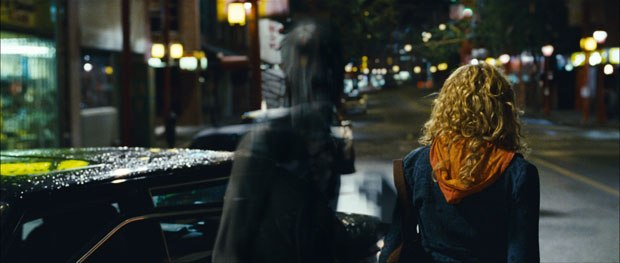Thomas J. McLean goes to The Eye doctor, Asylum, to find out all about the creepy vfx for this latest Americanization of an Asian horror hit.
Visual effects are, at their core, a trick played on the eyes of moviegoers that are not dissimilar from the tricks Jessica Alba's character thinks her new corneal transplants are playing on her in The Eye (opening Feb. 1 from Lionsgate).
This most recent adaptation of a hit Asian horror film may not have contained innovative vfx shots, but Asylum's work nonetheless added something important to the final product, according to VFX Supervisor Marc Varisco.
"I think visual effects lends itself to adding that extra element of realism to a horror film, which some of these in-camera approaches don't quite capture," he says.
Varisco adds that Asylum Chief Nathan McGuinness pursued the project because it offered the chance to work with Lionsgate, Paramount and producer Paula Wagner, who is Tom Cruise's partner in C/W Prods. and United Artists. The shop landed the job thanks to work on previous horror movies The Texas Chainsaw Massacre and The Amityville Horror, as well as some preliminary tests.
"We did some preliminary tests for them, for the Shadowman character that seemed to be moving in the right direction and we were brought on board," Varisco explains.
He says directors David Moreau and Xavier Palud, best known for directing the French horror film Ils (Them) wanted to inject a freshness to their take on the film and wanted to do as much of the work in camera as possible.
Shooting took place mostly in Albuquerque, with an old semi-conductor facility standing in for many locations, including the hospital sets. "It was sort of the less-is-more approach," continues Varisco, adding that it ties in very well into the concept of the film. "They were trying to play off the idea she's either paranoid and it's all going on in her head, the visions she has, or was it real."
Several sequences involved mirrors, and mirrored sets were built and shot in order to avoid having to paint out camera reflections later. Most of the vfx in the film were created with simple compositing tools, mostly Inferno and Flame with some use of Shake.
The latter was used on a key shot at the start of the film that began with a tight shot on Alba's eyes as she looked out her apartment window and pulled out to show a full vista of downtown Los Angeles.
One of the more challenging effects involved the Shadowman. An actor was photographed on set along with clean plates for every shot, which were used to create various transparency effects. Varisco says the actor's appearance was further distorted, and body parts such as his ears and nose were removed and his eye sockets deepened to create look that's creepier than what prosthetics would allow.
"Prosthetics have a certain quality of being applied to a face," Varisco says. "Visual effects sometimes gives you the ability to feel it's not so much of an appliance."
Varisco says the look of the character came full circle. "We did so many tests to try and make him look this way or that way. It ended up just being a compositing solution to it. We borrowed back a little bit of a look from the original but added a much more integrated and probably cool look to the Shadowman character," he says.
While the directors originally planned to limit the number of visual effects shots to 70, that number grew as shooting progressed to nearly 200, Varisco offers.
"The directors were trying to inject a little fresh approach to it, but it's hard to deny how the original went and sort of how good it was to a certain extent," he says.
The additional vfx elements came on sequences such as one set at the U.S.-Mexico border, where a concrete wall needed to be added to give the sequence more scope.
CG work was limited, though there were a few highlights, Varisco says, such as a sequence involving an explosion in a restaurant and another explosion sequence at the border crossing near the film's climax.
"We probably doubled the size of the explosions and added some direction to it down the row of cars," he adds. "And we wanted that explosion to have a sort of domino effect along the cars while Jessica and the rest of the cast were outrunning that."
Asylum had a small crew of about 25 working on the vfx shots for the film. Varisco says he worked closely with McGuinness, who as senior visual effects supervisor, looking over shots as they were completed. Asylum began work on the preliminary tests in December 2006 and finished up the movie a year later, with some downtime in that schedule to accommodate re-shoots.
The movie was shot on film, which Varisco says is better suited to the rawness of most horror films. "I think there's something about film, especially in the horror genre, that has the grittiness to it," he concludes.
Thomas J. McLean is a freelance journalist whose articles have appeared in Variety, Below the Line, Animation Magazine and Publishers Weekly. He writes a comicbook blog for Variety.com called Bags and Boards, and is the author of Mutant Cinema: The X-Men Trilogy from Comics to Screen, forthcoming from Sequart.com Books.












